MassArt Students and Alumni Combine Forces to Tune Into the Science of Sound
MassArt and TERC bring creative installations together with research on soundscapes and learning.
View story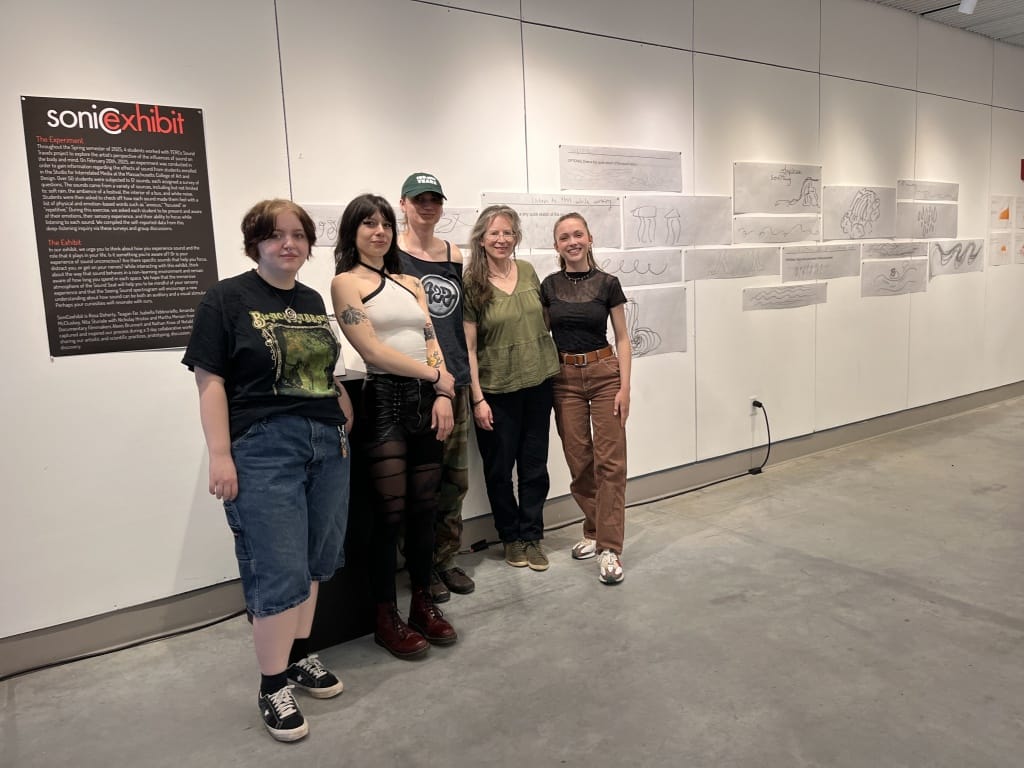
MassArt students develop community-designed emergency transport in Langa, South Africa—partnering with locals to improve healthcare access.
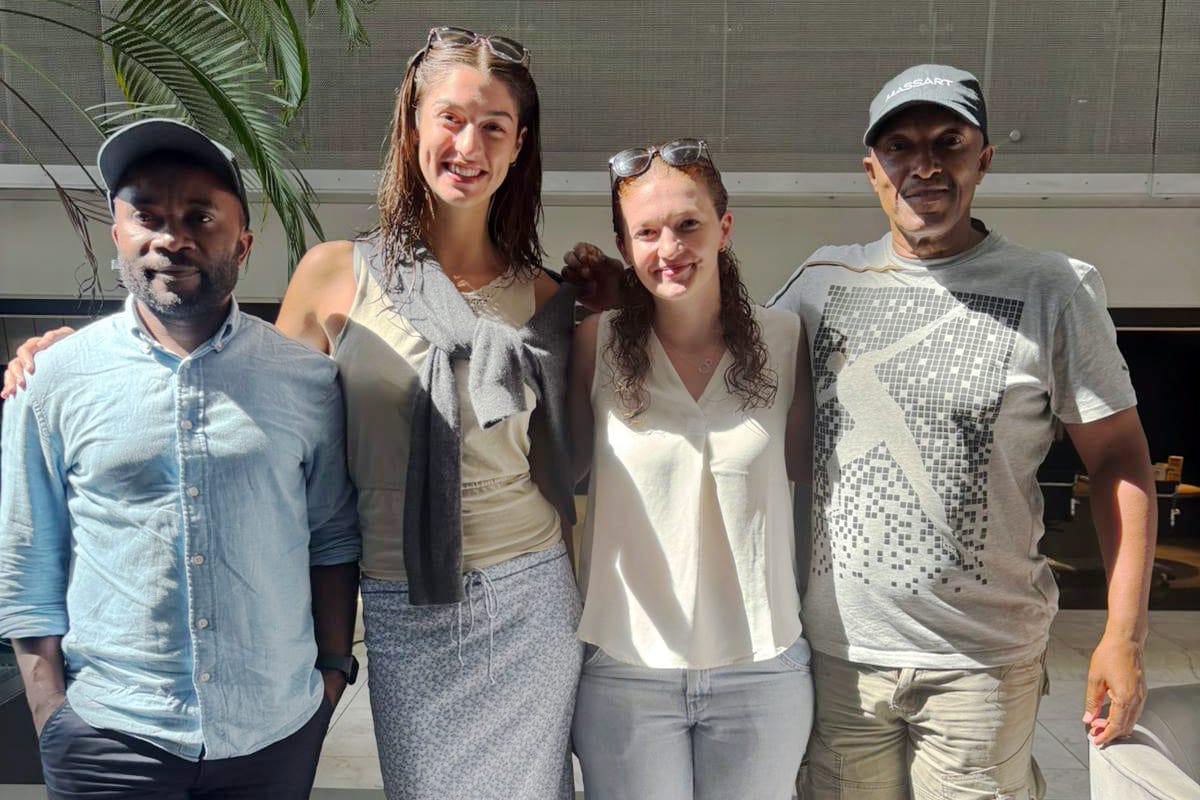
Michela Galazzi and Madeleine Johnson-Harwitz, pictured with Tekano Fellow Ganzamungu Zihindula and project partner Lebogang Molete.
Editor’s Note: Maddie and Michela returned to Langa in June 2025. Updates have been made to this story to reflect their most recent trip.
In Langa, South Africa, stories of hardship in accessing medical care are common—and often heartbreaking. Ambulances are scarce, roads are unpaved, and care often arrives too late, or not at all.
As Industrial Design students at MassArt, we cross registered at MIT for D-Lab: Design with Ankita Singh and Eliza Squibb in February 2024, where we launched REACH (Reliable Emergency Access for Community Health)—a partnership with Lebogang Molete of the PHELA Foundation aimed at improving emergency medical transportation in underserved communities.
Alongside an MIT student team, we began designing an all-terrain stretcher to safely transport patients to clinics. We continued REACH as our senior thesis, diving into research on South Africa’s townships, healthcare system, and existing products.
With support from the MassArt Foundation, we traveled to Cape Town in January 2025 to meet with community members to understand these challenges firsthand. More than an emergency transportation solution, REACH is a community-driven initiative to help build sustainable healthcare infrastructure in South Africa’s townships.

An early prototype of an all-terrain stretcher to safely transport patients to clinics, developed in partnership with MIT student team.

Michela Galazzi works on a second phase prototype of an all-terrain stretcher to safely transport patients to clinics, in partnership with MIT student team.
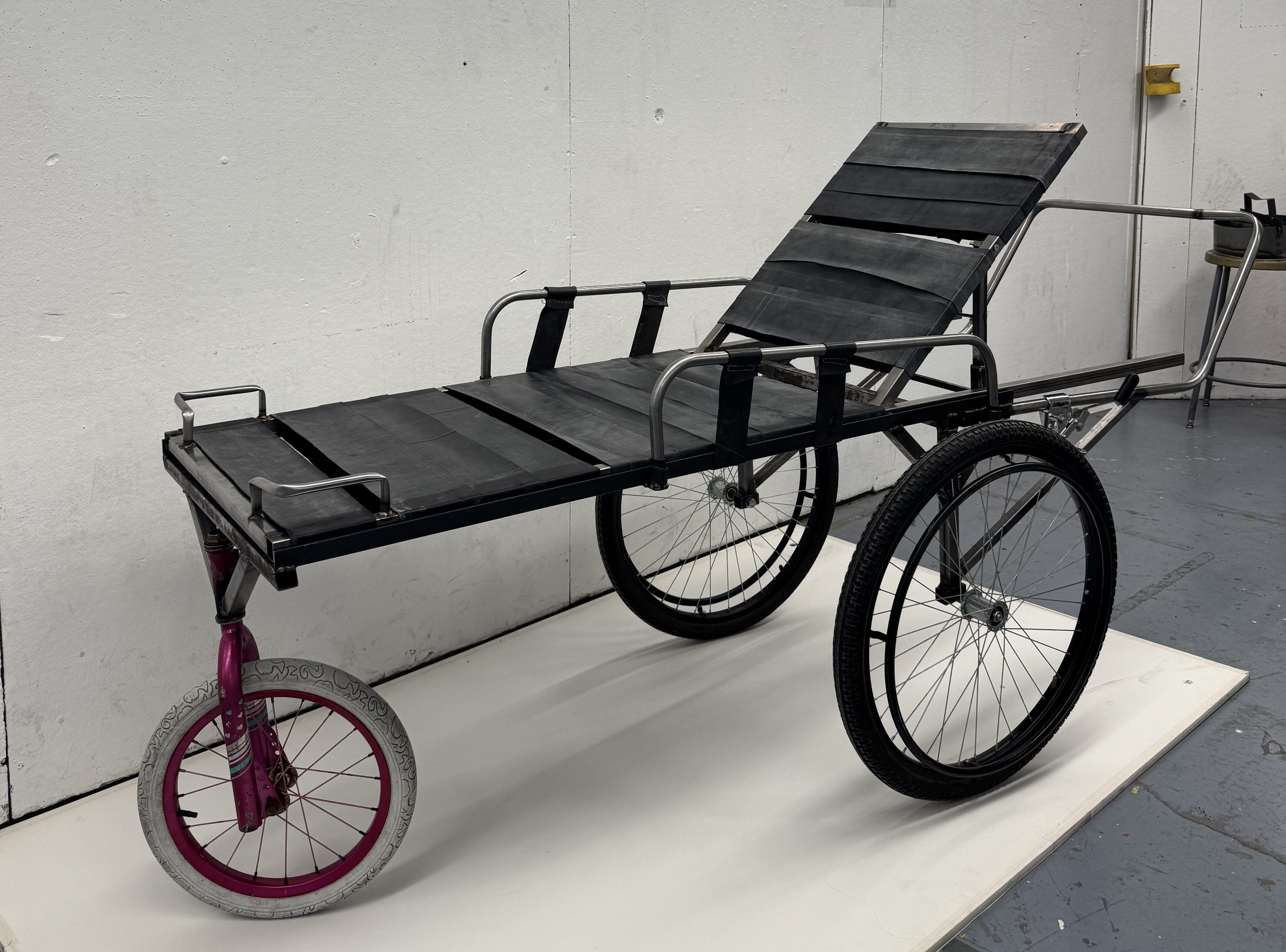
REACH (Reliable Emergency Access for Community Health) in its fourth prototype iteration, consisting of both bike and wheelchair components.
Our first stop was a meeting with Mzikhona Mgedle, the founder of Langa Bicycle Hub. The team took us through Langa by bike, explaining the different areas and terrain of the township and the existing infrastructure. We saw homes constructed with rusting tin sheets, old planks of wood, and other found materials, with no access to clean water. Biking from these areas to the local medical facilities gave us a real understanding of the area’s barriers to accessing care and how the system wasn’t set up to serve those living in lower infrastructure areas. With narrow dirt roads riddled with potholes and broken down cars, it was apparent that ambulances wouldn’t be able to access those deeper into these settlements.
We also met with Yvette Andrews, the Clinical Program Coordinator for Langa, who dedicated time to helping us understand the unfiltered realities of healthcare in many of South Africa’s townships. She introduced us to the coordinator of Langa’s 42 community healthcare workers, who act as the first level of care. They gave us a tour of their small wellness center, and the insight we gained during this visit went beyond what our research from the previous semester had taught us.

A walking tour through Langa led by the founder of Langa Bicycle Hub Mzikhona Mgedle, and Langa’s Clinical Program Coordinator Yvette Andrews. Photo by Michela Galazzi
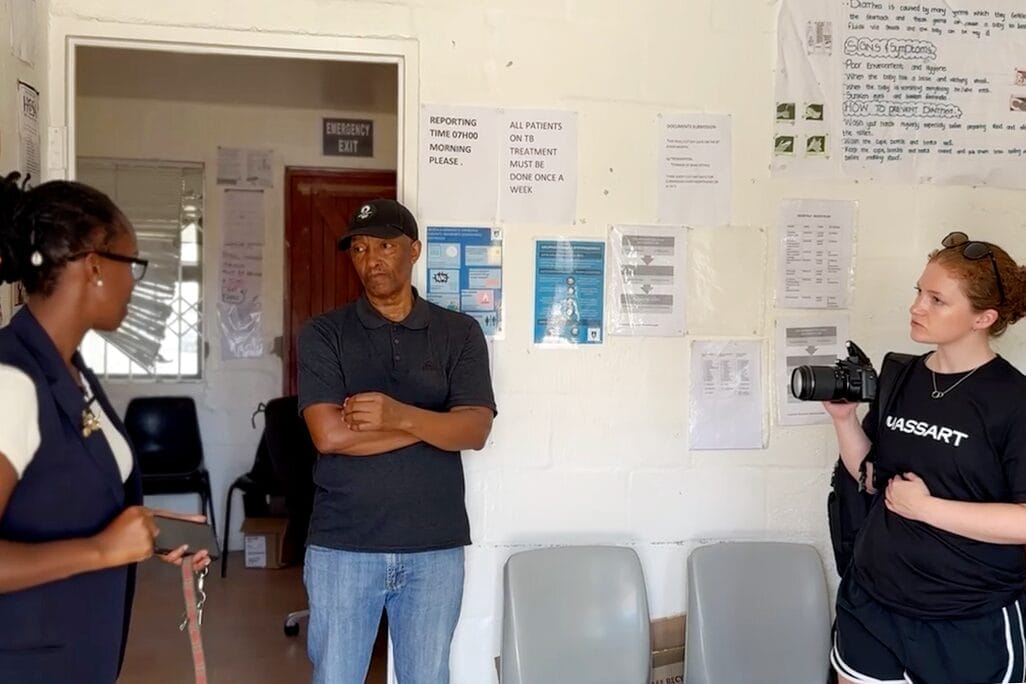
Madeleine speaks with the Director Of Community Health Workers and Lebogang Molete of the PHELA Foundation inside Langa’s Wellness Centre. Photo by Michela Galazzi
During our stay, we also met up with a fantastic organization, Shonaquip SSE, a local enterprise that builds assistive mobility devices and enables the inclusion of children with disabilities and their families across Southern Africa. Shonaquip’s founder, Shona McDonald, invited us to tour the manufacturing facility, meet the design team, and shadow a technician during their clinic day.
At the warehouse, we were able to see first-hand the iterative designing and testing processes required for customized assistive devices. Spending time with Shonaquip’s head of design, we learned about the development of each of their products, and the importance of balancing affordability with functionality.
Shonaquip’s clinical team shared insights drawn from years of field experience assessing patients, fitting them to the proper devices, and educating on usage and repair. The clinical team members knew each device inside and out, and were able to point out where common failures occurred, what areas required the most maintenance, and even the psychological barriers most prevalent in patients and communities surrounding medical care.

Michela explores the Shonaquip Warehouse where customized parts are sorted and stored. Photo by Madeleine Johnson-Harwitz

Madeleine examines a child’s wheelchair alongside Shonaquip’s Seating Practitioner & Facilitator Robyn Kleintjes. Photo by Michela Galazzi
We were able to accompany the clinical team on a maintenance and repair off-site to a non-profit facility that provides 24/7 residential care for children with severe intellectual and physical disabilities. We spent the day shadowing and assisting the clinical team as they assessed each of the children’s wheelchairs and identified their needs. We observed how the team connected with the caregivers to ensure their feedback was heard and they understood how to properly operate the wheelchairs.
For the clinical team, this was a regular day of outreach, just a routine part of their job, but for us, it was a moving look into the benefits of dignified care and proper equipment. We ended the day scribbling down notes, sketching new ideas, and brainstorming.

Michela shares reciprocal smiles with children at the Little Angels Home while onsite with the Shonaquip’s Clinical Team. Photo by Madeleine Johnson-Harwitz

Madeleine helps to repair the deteriorating foam in a child’s wheelchair, led by Shonaquip’s Seating Practitioner & Facilitator Robyn Kleintjes. Photo by Michela Galazzi
The REACH Stretcher aims to bridge the existing emergency healthcare gap by providing a mobile, highly portable stretcher that can be stored at central hubs within the township. This will allow patients to be transported safely and efficiently through dense, uneven areas to either an ambulance waiting on an access road or to a clinic.
We’ve developed a stretcher that is both rugged and easy to maintain, designed with locally sourced materials and bicycle parts, allowing it to be repaired and adapted using tools and skills already present in the community.
Next steps for the REACH Stretcher include:
Our time in Langa reinforced the importance of designing with communities, not for them. Our project is as much about systems and relationships as it is about hardware. By working with Shonaquip and the local bike hub, we aim to not only build a product, but help lay the groundwork for a sustainable emergency care infrastructure that can scale to other townships.
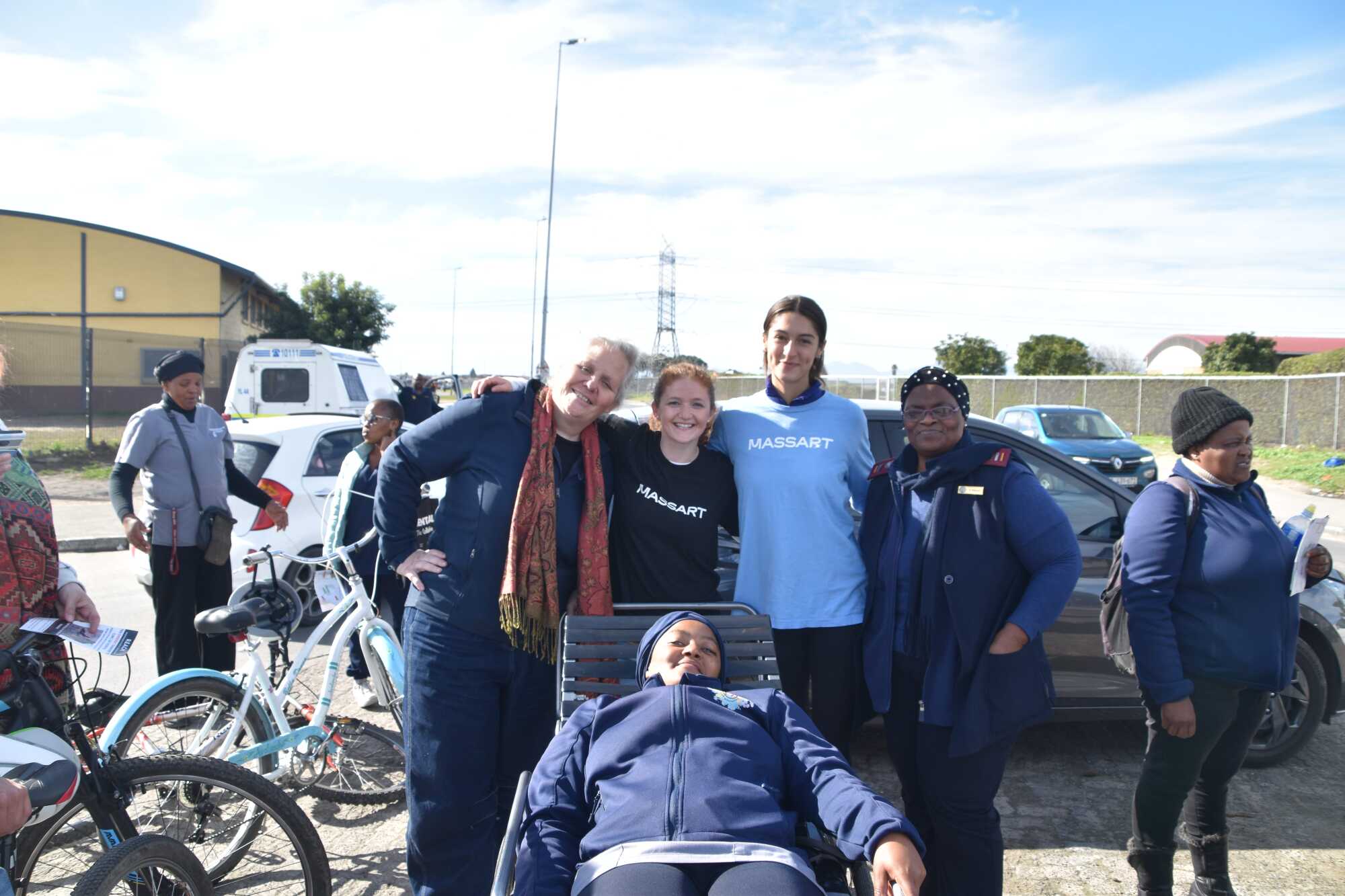
After a semester of prototyping and iterating, including the construction of four full-scale stretchers, we were ready to enter the next phase of the project in Langa. With our bags packed full of tools and safety glasses, and our final prototype cut down and zip-tied into our checked luggage, we made our return to South Africa in June 2025.
Alongside our MIT student team, we arrived with three main goals:


In the few weeks we were able to spend in Langa, we were able to establish a collaborative relationship with the Langa Safety Patrol, present to the staff of Vanguard Community Health Centre, perform an instructional demonstration to the Community Health Workers in the township, identify and partner with local businesses as contact points during emergencies for those without phone access, distribute hundreds of informative flyers in both English and Xhosa (the primary language spoken in the Western Cape), and even hold a parade through the streets for our professionally manufactured stretcher.
The parade acted as a celebration of the start of the next stage of the project: a collaborative testing phase that will give us vital feedback. This is another step towards getting the REACH stretcher into other communities and more rural spaces. We look forward to sharing more about our project updates and trip in the near future.
MassArt and TERC bring creative installations together with research on soundscapes and learning.
View story
Emily Blair, Sculpture and History of Art ‘26, found her creative home at MassArt, where the facilities are unlike anywhere else.
View story